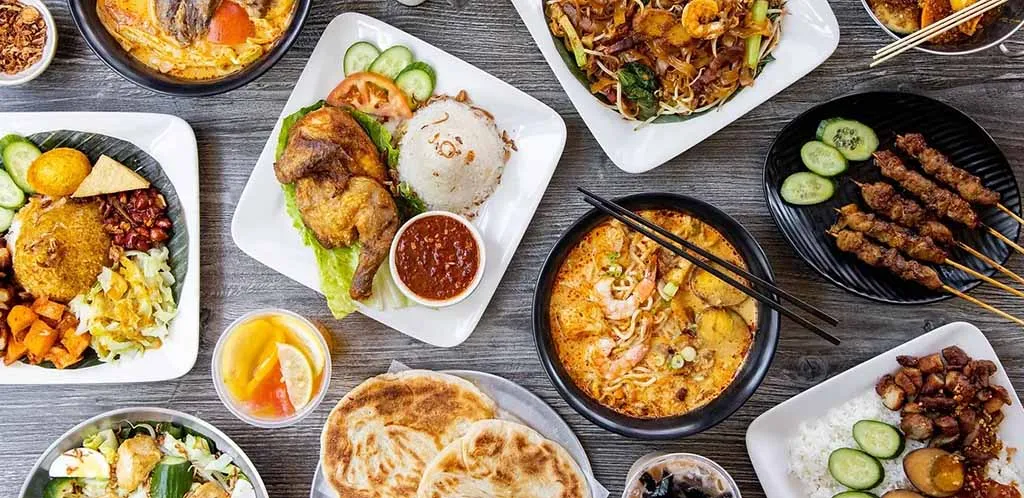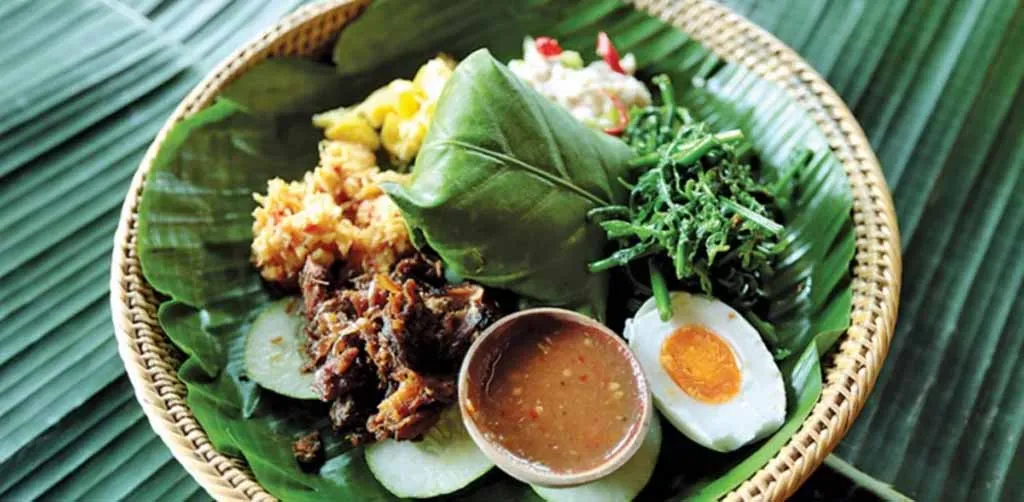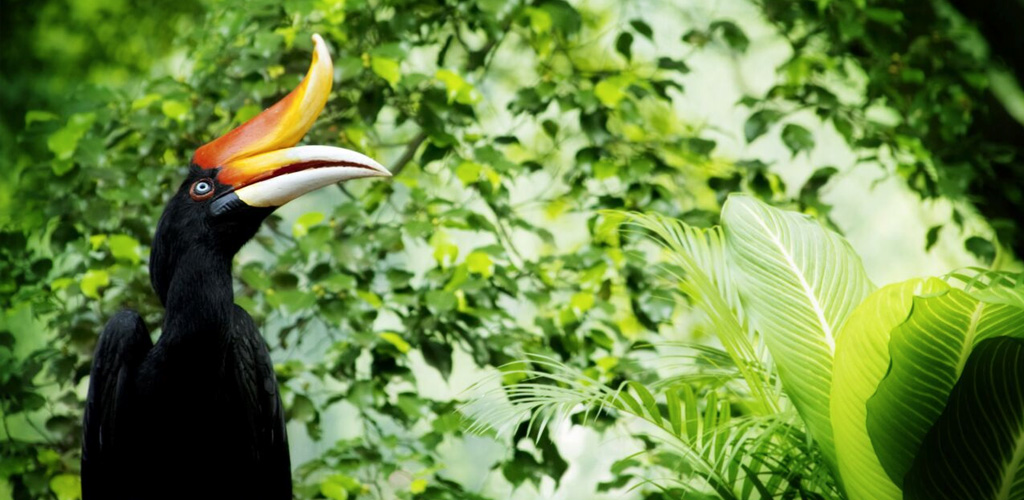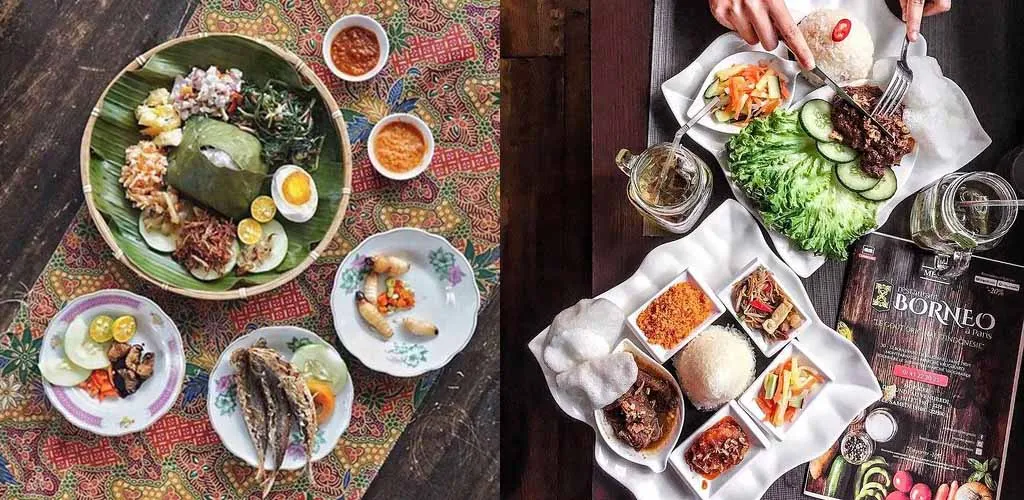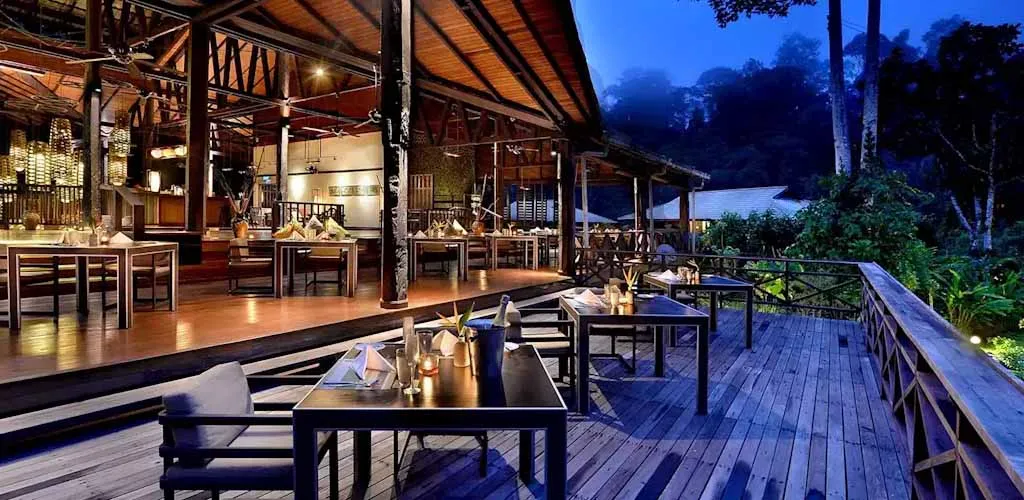Borneo Cuisine
Once at the crossroads of the ancient spice trade, the cuisine of Malaysia beautifully reflects the rich blend of populations and influences that have shaped this country, situated at the crossroads between the Middle East, India, China, and neighboring countries such as Thailand and Indonesia. During the 16th century, Banda Island in Indonesia became a sought-after destination for traders in search of the highly prized cloves and nutmeg. Ancient Arabian and Indian traders left their mark on the country's food culture and Chinese immigrants influence is apparent in Indonesian dishes featuring noodles, rice, and stir-fried ingredients.
In the regions of Sarawak and Sabah, one can discover these diverse range of cuisines representing the Malay, Chinese, Sino-Malaysian (Peranakan), Indian, and Indo-Malaysian (Mamak) components of the country. To further enhance this already captivating culinary landscape, Borneo brings its own unique offerings. The original cuisines of the indigenous ethnic groups add a distinct touch, while the region's natural bounty, enriched in quality and diversity by the climate, contributes to the exceptional flavors. Additionally, the waters surrounding Borneo are among the richest in fish, although the longevity of this abundance is a growing concern for the future.
The ethnic cuisine of Borneo is locavore and often organic. Whether grown or taken from the wild, many ingredients are collected from the surrounding areas, farm and country to table. Dishes are often cooked or wrapped in leaves, bamboo sections, fern pickings, wild ginger flowers and stalks, all of which are freshly picked. On a hike, experience the rawest facet of Borneo cuisine, with your guides cooking gathered ingredients from the jungle.
Almost every dish offers fresh insight into the history and culture of Borneo. Like much of Asia, rice (nasa) and noodles (mee) are ubiquitous. Rice is either steamed or fried, while noodles are made from wheat, wheat and egg, rice or mung beans, and are used in a large number of dishes being fried or boiled.
Malays generally prefer their fish fried (ikan), whole and stuffed with spices, or chopped into chunks or steaks and served with a spicy (tamarind) sauce. In Malaysian Borneo, hinava (raw fish marinated with lime juice and herbs) is widely popular. Etnic Chinese locals prefer to cook large fish either steamed (when the fish is extremely fresh), fried, or braised. Fish is also served in a variety of other ways, such as the dish otak (rectangles of fish wrapped in banana leaf and grilled over charcoal), or with noodles in a spicy soup. Karang (shellfish) and unam (crustaceans) are also highly popular.
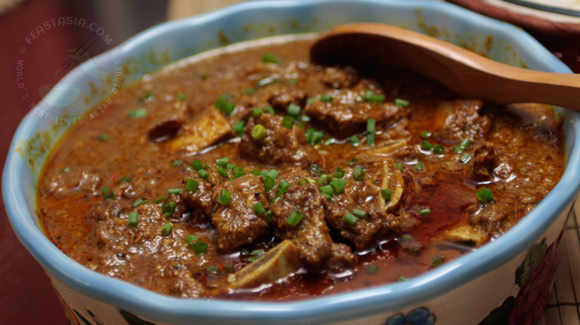 After fish, chicken (ayam) is the most popular meat in dishes yet beef (daging lembu) and mutton (daging kambing) are also common in Malay dishes such as beef rendang (beef in a delicious thick coconut-milk curry sauce), daging masak kicap (beef in soy sauce), and gulai daging (beef curry). A traditional dish in Malaysia, beef rendang traces its origins from the Minangkabau ethnic group of the highlands of Western Sumatra and is many a traveler's favorite (right).
After fish, chicken (ayam) is the most popular meat in dishes yet beef (daging lembu) and mutton (daging kambing) are also common in Malay dishes such as beef rendang (beef in a delicious thick coconut-milk curry sauce), daging masak kicap (beef in soy sauce), and gulai daging (beef curry). A traditional dish in Malaysia, beef rendang traces its origins from the Minangkabau ethnic group of the highlands of Western Sumatra and is many a traveler's favorite (right).
While pork (babi) is considered haram (forbidden) amongst Muslims locals, the Chinese and lesser extent, Indians enjoy it in dishes.
Protein-rich soya bean (dao, also called tau) is present in many dishes, whether in the form of bean curd tofu, fermented beans or soy sauce. Pulses, dried beans, peas and lentils – form the basis of many an Indian vegetarian dish, including dhal (lentil, pea or bean, also called daal) curry and dosa, paper-thin rice-and-lentil crepes served with coconut chutney and curry.
In the jungle areas, aago palm is the main starch component of some tribal meals. Sago-based boar and deer are Sarawak favourites, and vegetable dishes made with jungle ferns and paku (fern shoots) are not to be missed.
It is impossible to conceive of a Malaysian dish without chilli. Blended and ground with other spices, it adds depth to a curry. Chillies blended on their own form the base for many a sambal (relish) and chilli sauce.
Considered the heart and soul of Malay curries and sauces, rempah is a mix of spices created by pounding a combination of wet (including shallots, lemongrass, garlic, chilli and ginger) and dry (items such as candlenuts, cinnamon, coriander, seeds, cumin, cloves and peppercorns) ingredients to form a paste. These pastes are then used to form the basis of many Malay dishes.
Fruits are served ripe and sliced on a large mixed fruit platter. They are sometimes used in salads, such as rojak (salad with shrimp-paste based dressing), or kerabu tau geh (bean-sprout salad). The red, leathery and hairy skin of rambutans conceals a sweet, succulent, semi-translucent white flesh. Also not so attractive on the outside is jackfruit, but its bright yellow flesh is sugary sweet and very fragrant.
Sarawak cuisine
Many of the dishes below are found in the two provinces, but here are specialties of Sarawak.
Chinese and Sino-Malay (Peranakan) cuisine
The different Chinese communities make the provincial capital Kuching a mini Georgetown (capital of the Malaysian island of Penang and street-food mecca) where recipes specific to the different diasporas but also to the Peranakan culture are prepared, culinary crossbreeding Sino-Malaysian born in the region of the Straits of Malacca. Food courts (street food-type stalls) as well as small restaurants are often dish specialists from passed on from father to son, experienced in a handful of recipes. The same is true in Sibu, a very Chinese city, in Miri and in all the towns. In fact, everywhere you have to eat you will find Chinese influences on the dishes.
A Sampling of dishes
- Laksa Sarawak : broth with tamarind, lemongrass, mint, coconut milk (added at the last moment), poached sardines, chicken, rice vermicelli or egg noodles, plus, depending on the location, fresh prawns, cockles, soufflés of “tau” and tofu pok.
- Kuay Chap: homemade cigar-shaped noodles, served with a thick pork broth spiced with black pepper and anise, braised pork (bacon, offal), onions and boiled egg.
- Kolo Mee: a noodle preparation that is as simple as it is delicious.
- Lei Cha (Thunder Tea): A mysterious green soup with medicinal properties, served with rice and fresh vegetables.
Malay and Indo-Malaysian specialties
- Wrapped “bungkus” in a betel leaf, the yellow turmeric rice flavored with Nasi Lemak coconut milk is the appetite suppressant snack of Sarawak, present in the depths of the country. It is also found in fancier city venues, on a plate and sometimes as a buffet with fried chicken, grilled anchovies, peanuts, and more.
- Meat and fish "lalapan", named after the delicious typical sauce that accompanies them.
- Fried pencet chickens and savory beef rendang curry .
- From the Indo-Muslim influence: Roti patties sometimes eaten with vegetable curries (lentils), meat or fish; and their thicker, stuffed martabak cousins – try apam balik, a sweeter version.
Two delicious specialties perfectly embody Sarawak:
- The wild regional rojak mixes fruit, tofu and donuts in a more wild saté sauce (shrimp paste, palm sugar, lime and peppers).
- The egg rich kek lapis is an ubiquitous layer cake subject to endeless innovation and styles as to the arrangement of its multiple layers in such as the "zigzag, ""batik", "waves" and more.
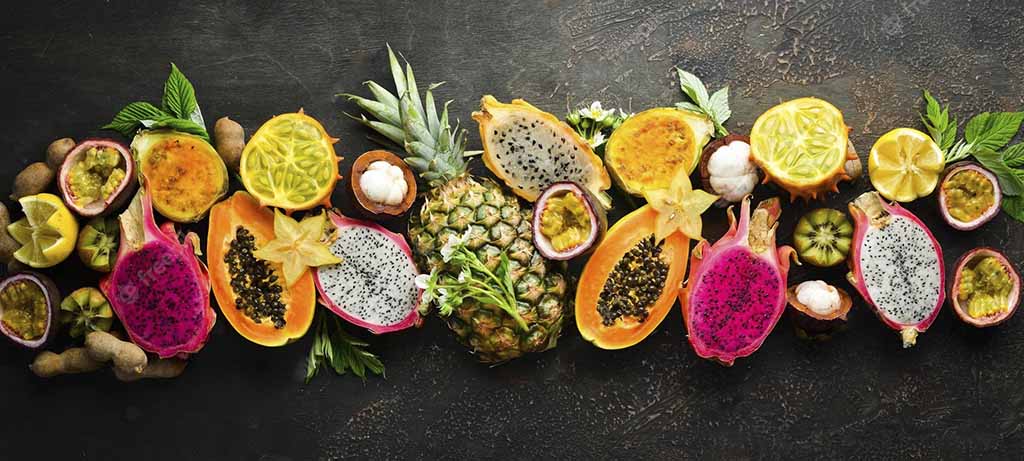
Ethnic specialties of Sarawak
- Ayam pansuh chicken: steamed in bamboo, with spices and wild herbs.
- Umai is raw fish seasoned with onion, chili, salt and lemon juice, a Borneo ceviche that is traditionally served with a bowl of grilled sago pearls .
- Midin and paku ferns are young fronds served sautéed or blanched in a salad. Very popular, even in towns. Tapioca leaves (cassava) are prepared in the same way.
- Sago worms: fleshy capricorn caterpillars, it's the indulgence of ethnic groups. Sautéed, it's taste resembles gnocchi. Sometimes served raw and fidgeting, for courageous eaters.
Sabah's Popular Dishes
- Tuaran mee: sautéed egg noodles, served with various sides (pieces of spring rolls, Char Siu pork, vegetables).
- Sayur manis: "sweet vegetable" with a taste and appearance similar to spinach. Leaf of a shrub known throughout the Far East, Sabah has made it its provincial vegetable. On almost every menu, sautéed with garlic, mini anchovies ikan bilis and fermented shrimp paste.
- Hinava: like the umai of Sarawak, fish (swordfish for example) or raw prawns, “cooked” in calamansi juice, with shallots, ginger and salt.
- Ngiu chap is like Kueh Chap but with beef instead of pork.
Other typical Sabah dishes:
-Bak kut teh, a pork rib dish cooked in broth of Singaporean origin.
- Malaysian Curry laksa. A delicious curry traditionally made with rice noodles, fresh prawns, chicken, tofu puffs and fish balls, with fried Asian shallots and Vietnamese-style mint combinging for a robust balance of sweet, sour, salty and spicy tastes.
- Indonesian soto mee noodle soup and ikan bakar grilled fish .
Ethnic dishes
- Sinalau bakas (wild boar) .
- Ikan panggang, a grilled fish in banana leaf.
Fruits, desserts and other dishes
- Surprising taste, but very thirst-quenching, fresh or arranged fruit juice such as lime and sour plum Calamansi Sour Plum Juice .
- Jamu is based on medicinal herbs and roots (ginger, turmeric, etc.), a traditional elixir of Indonesian origin, in sweetened versions.
- Cendol green noodles, ais kacang (“glazed bean”), ais batu campur (ABC) are Malaysian variations of the multicolored desserts found throughout Asia.
- Borneo is a paradise for fruit lovers with an exotic variety, including jackfruit, dalit and sukang, durian, bambangan, kedondong and more.
- tuak is a fermented alcohol of sticky rice prepared by the Iban.
